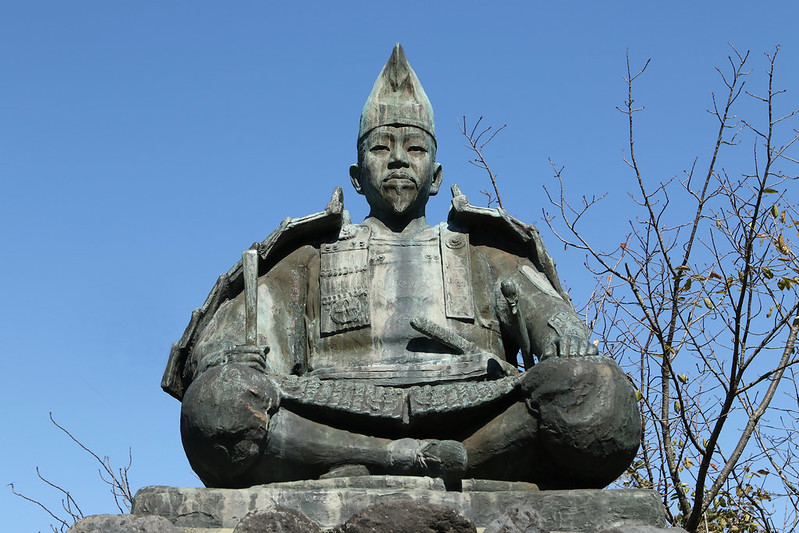
Minamoto no Yoritomo: The First Shōgun of Japan (Part 2)
Minamoto no Yoritomo (May 9, 1147 – February 9, 1199), was the first shogun of Japan. His Buddhist name was Bukōshōgendaizenmon. The British diplomat and historian of pre-modern Japan, George Bailey Sansom once said, “ Yoritomo was a truly great man … his foresight was remarkable, but so was his practical good sense in setting up machinery to match his own expanding power.” Minamoto no Yoritomo’s quests and valor live on in history.
Gate of Seigan-ji in Nagoya, the site of the former family villa and Minamoto no Yoritomo’s birthplace.
A new hope
In 1180, the son of cloistered Emperor Go-Shirakawa, Prince Mochihito, was disgraced by the Taira clan for their support in the accession of the throne of his nephew and half Taira, Emperor Antoku. Prince Mochihito made a national call to arms of the Minamoto clan all over Japan to rebel against the Taira. Yoritomo joined this effort and set himself up as the rightful heir of the Minamoto clan and built a capital in Kamakura.
When Taira no Kiyomori died, a far harsher Taira no Munemori took his place. He set much more aggressive policies against the Minamoto during the Genpei War. Yoritomo however was secured at Kamakura and his brothers Monamoto no Yoshitsune and Monamoto no Noriyori defeated the Taira in several important battles.
From 1181 to 1184, a de facto truce with the Taira allowed Yoritomo time to build an administration of his own which centered on his military headquarters in Kamakura. Finally, Yorimoto defeated his rival cousins from stealing from him his stronghold on his clan.
The legacy of the first shōgun
Minamoto no Yoritomo established the supremacy of the warrior samurai caste and the first shogunate (bafuku) at Kamakura. This was the beginning of the feudal age in Japan that lasted until the mid-19th century.
Yoritomo’s legacy is said to include the Throne “handed to the leader of the military class effective jurisdiction in matters of land tenure and the income derived from agriculture”. This was made possible by Go-Shirakawa in December of 1185, by giving Yoritomo the authority to collect the levy contribution of rice and to appoint stewards (jito) and constables (shugo).
Minamoto no Yoritomo’s grave. | Chris 73
Yorimoto further established his power by invading and subjugating the provinces of Dewa and Mutsu. He also took up formal residence in the Rokuhara mansion at the capital, Taira clan’s former headquarters.
When Go-Shirakawa passed in 1192, his successor, Go-Toba made Yoritomo Sei-i Tai Shōgun (Generalissimo). This made possible the organization of a feudal state in Kamakura while Kyoto became just a place for “national ceremony and ritual”.
Upon Yoritomo’s death, his wife’s family, the Hōjō, took control and maintained power over the shogunate until 1333, under the title shikken (regent to the shōgun). The stone pagoda gorintō is traditionally believed to be Yorimoto’s grave.
*This Wikipedia and Wikimedia Commons image is from the user Chris 73 and is freely available at //commons.wikimedia.org/wiki/File:Grave_of_Minamoto_no_Yoritomo.jpg under the creative commons cc-by-sa 3.0 license.
Read Part 1 here!


